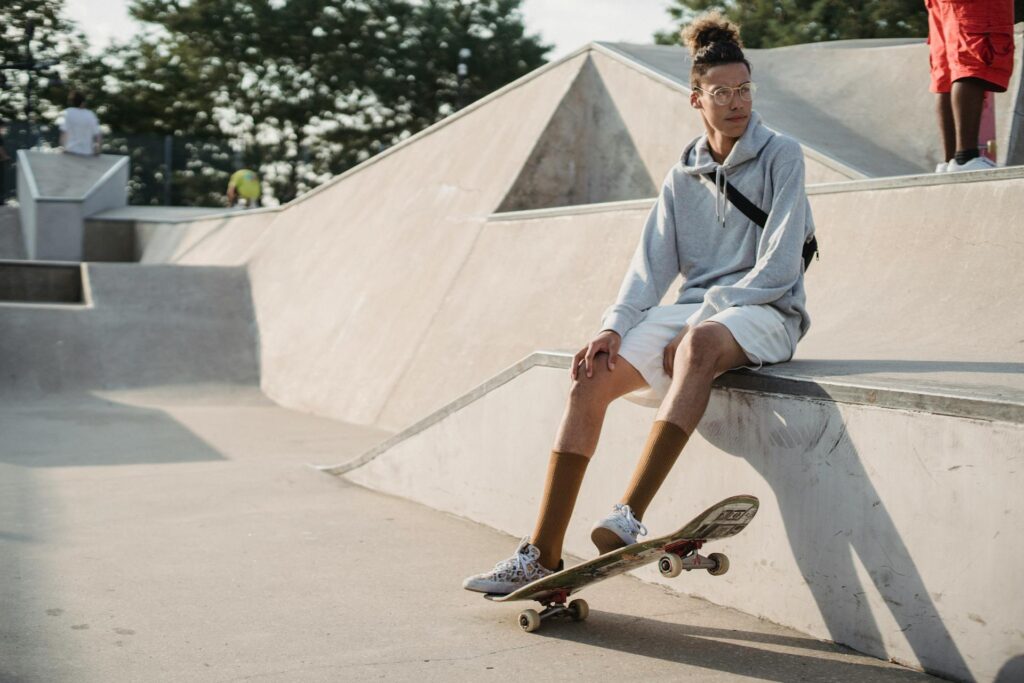If you live an active lifestyle, your glasses might be doing more than fogging up or slipping down your nose. They could actually be subtly holding you back. And while contact lenses solve some of those problems, they’re not a perfect solution either – especially for people with dry eyes or sensitivity.
Understanding exactly how glasses (and contacts) impact your physical activities can help you make informed decisions about whether alternative vision correction options might better suit your lifestyle.
The Hidden Ways Glasses Limit Your Performance
Beyond the obvious annoyances of fogging and slipping, glasses create several subtle limitations that can impact your athletic performance and overall comfort during physical activity. These restrictions might seem minor individually, but collectively they can significantly affect your experience and results.
Your peripheral vision takes a major hit when you wear glasses. The frames create blind spots on the sides of your visual field, and you can only see clearly through the lenses themselves.
This limited field of view can be particularly problematic in sports that require awareness of your surroundings – basketball, soccer, cycling, or any activity where you need to track multiple moving objects or people. You might unconsciously turn your head more frequently to compensate, which can slow your reaction times and affect your performance.
Depth perception can also be subtly affected by glasses, particularly if your prescription is strong or if you have any astigmatism correction. (The lenses create slight distortions at the edges, and the distance between your eyes and the lenses means your brain has to process visual information slightly differently than it would with natural vision.)
For activities requiring precise distance judgment – like catching a ball, gauging the distance to a curb while running, or parking a car after your workout – these small distortions can create split-second hesitations that impact your confidence and performance.
The weight and pressure of glasses on your face also becomes more noticeable during extended physical activity. Even lightweight frames create pressure points on your nose and behind your ears, which can become uncomfortable or even painful during long runs or workout sessions. This is made even more uncomfortable when you’re wearing a hat, as it can pinch the frames between your ears and the cap.
Why Contact Lenses Aren’t Always the Answer

Many active people turn to contact lenses as a solution to glasses-related activity limitations, and contacts certainly address some of the problems. However, they come with their own set of challenges that can be just as frustrating for people with active lifestyles.
Dry eyes are a common complaint, and physical activity often exacerbates this problem. Exercise increases blood flow and can affect tear production, while activities in air-conditioned gyms or windy outdoor environments can dry out your contacts quickly. You might find yourself squinting or blinking excessively, reaching for eye drops, or dealing with the uncomfortable sensation of dry lenses on your eyes during the times when you most need clear, comfortable vision.
Swimming and water sports create obvious problems for contact lens wearers. You’re technically not supposed to wear contacts in water due to the risk of bacterial infections, but many people do anyway because they need to see. This creates a choice between clear vision and proper eye health – not an ideal situation. Even in chlorinated pools, the chemicals can interact with your lenses and irritate your eyes.
LASIK as a Solution for Athletes

For athletes and fitness enthusiasts looking to completely eliminate vision-related distractions, a LASIK procedure is sometimes the best solution. The procedure offers a level of visual freedom that glasses and contacts simply can’t match, addressing virtually all of the limitations that traditional vision correction creates during physical activity.
LASIK provides unrestricted peripheral vision that glasses can never achieve. Without frames blocking your side vision, you can maintain full awareness of your surroundings during sports and activities. This expanded visual field improves reaction times, spatial awareness, and overall performance in virtually any physical activity.
- Basketball players can track defenders in their peripheral vision without turning
- Runners can see obstacles and other people approaching from the sides
- Cyclists can maintain better awareness of traffic and road conditions
The procedure also restores natural depth perception by eliminating the distortions that lenses create. Your eyes can judge distances accurately without the slight magnification or minification effects that glasses lenses produce, especially for stronger prescriptions. This improved depth perception enhances your ability to catch balls, navigate uneven terrain while trail running, or judge your position relative to other competitors during sports.
Weather becomes a non-issue when you don’t have lenses to fog up. You can run in a downpour, transition from cold outdoor air to a warm gym, or work up a serious sweat without any impact on your vision clarity.
LASIK also eliminates the ongoing costs and hassles of maintaining vision correction. You don’t need to budget for annual contact lens supplies, replace broken or scratched glasses, or pack extra supplies when you travel. Your vision is fine…all of the time.
Making the Decision That’s Right for You
If you’re finding that glasses or contacts are interfering with your active lifestyle, it’s worth exploring your options for more permanent vision correction. LASIK isn’t right for everyone; however, for many active individuals, the procedure offers a level of visual freedom that dramatically improves both performance and quality of life.

